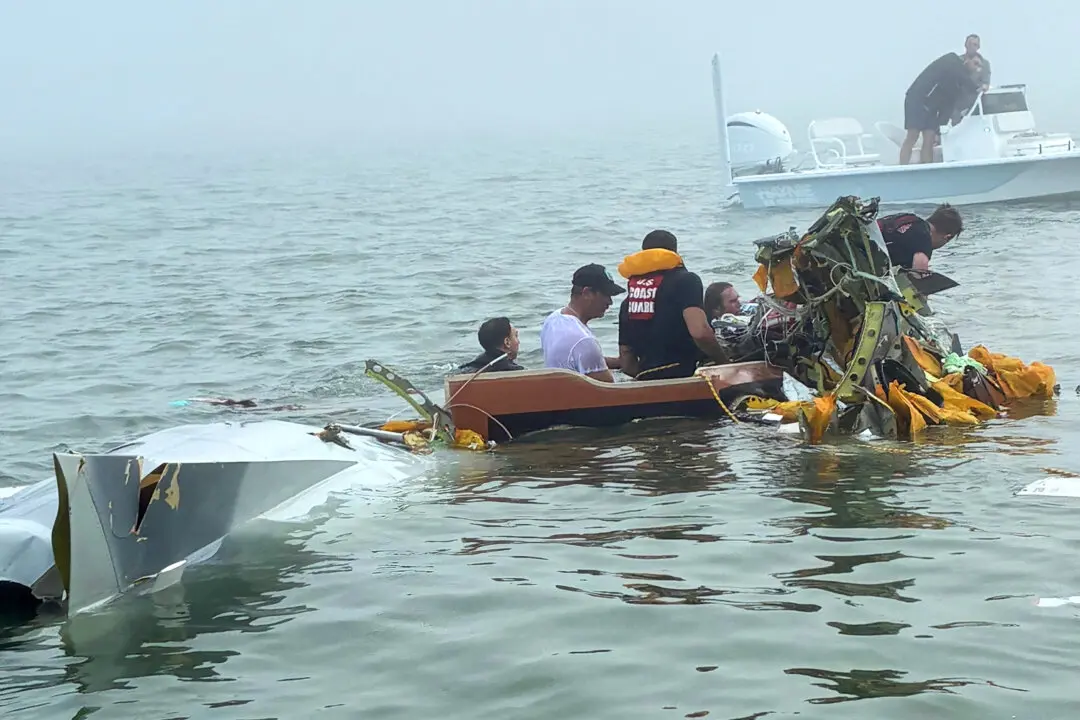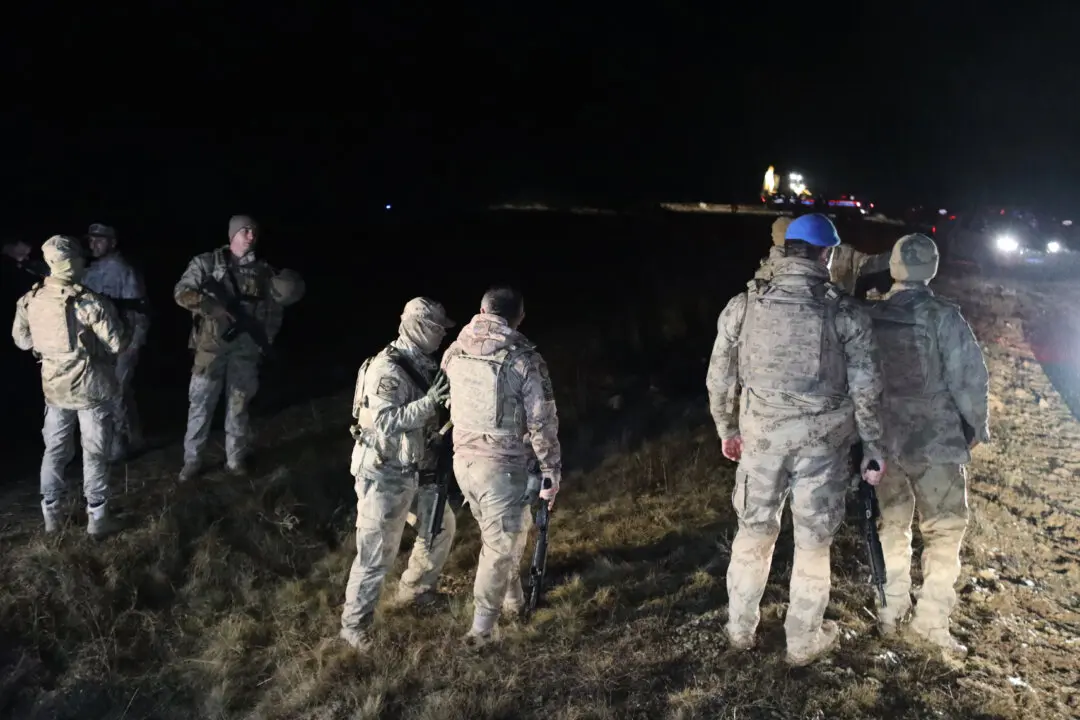DESERT CENTER, Calif.—No safety issues were found earlier this year during an inspection of a bridge along Interstate 10 that collapsed during a major storm, indefinitely severing a major artery between Southern California and Arizona, a state transportation official said Monday.
The bridge, which was built in 1967 near the tiny town of Desert Center, passed inspection March 17, according to Will Shuck with the California Department of Transportation.
Sunday’s collapse of the eastbound side of the interstate left one driver injured, stranded numerous others and complicated travel through the region, possibly for a long time. Motorists who would normally use the six-lane I-10 will have to go far out of their way on two-lane local routes.
The bridge, which spans a desert gully about 50 miles west of the Arizona state line, was washed out as remnants of a tropical storm off Baja California dumped rain at a rate of 1.5 inches an hour. A total of 6.7 inches fell Sunday in Desert Center, said National Weather Service forecaster Ken Waters. Showers and thunderstorms in drought-stricken southern and central California set rainfall records in what is usually a dry month.
Inspectors planned to assess all bridges along a 30-mile stretch of the interstate after a second bridge showed signs of damage following the storm, which sent torrents of water and debris through desert washes, said Terri Kasinga, spokeswoman for the California Department of Transportation.
She did not know how many bridges that stretch included. The damaged bridge was still standing despite having much of the earth underneath it washed away.
The westbound section of the freeway was also closed. The roadway was intact but badly undermined by flooding and could need extensive rebuilding, Kasinga said.
No timeframe was given for when either side would reopen as crews were diverted from other projects to examine the site Monday.
[aolvideo src=“http://pshared.5min.com/Scripts/PlayerSeed.js?sid=1759&width=480&height=350&playList=518955695&responsive=false&pgType=console&pgTypeId=editVideo-overviewTab-copyCodeBtn”]
Transportation officials recommended travelers on the east side of the collapse use U.S. Highway 95 in Arizona to get to other freeways, and that in California drivers use state routes 86 and 111 to get to Interstate 8 into Arizona. Drivers from the Los Angeles area who want to rejoin I-10 could take the mountainous State Route 62 to the north — a journey of an additional 140 miles and several extra hours.
One driver had to be rescued from a pickup that crashed in the collapse and was taken to a hospital with moderate injuries, the Riverside County Fire Department said.
Hundreds of other cars were stranded immediately after the collapse, but the California Highway Patrol worked to divert them. It wasn’t clear if any remained, Kasinga said.
Rain fell Sunday afternoon in parts of Los Angeles County’s mountains, the valley north and inland urban areas to the east as remnants of tropical storm Dolores brought warm, muggy conditions northward.
The showers forced the Los Angeles Angels’ first rainout in 20 years and the San Diego Padres’ first rainout since 2006.
Saturday’s rainfall broke records in at least 11 locations, including five places that had the most rain ever recorded on any day in July, said National Weather Service meteorologist Joe Sirard.
July is typically the driest month of the year in Southern California. Because of that, Saturday’s 0.36 inch of rain in downtown Los Angeles exceeded the 0.24 inch recorded July 14, 1886, which had been the wettest July day in nearly 130 years. Ramona in San Diego County received 4.1 inches of rain in the 48 hours ending at 7 p.m. Sunday, while Pinyon Pines in Riverside County got 3.28 inches.
The storm brought weekend flash floods and power outages and turned Los Angeles County’s typically packed coast into empty stretches of sand. The threat of lightning forced authorities to close 70 miles of beaches.
The summer storm helped firefighters advance on two wildfires that broke out Friday, including one that forced the closure of another key Southern California freeway.
Interstate 15 in the mountainous Cajon Pass northeast of Los Angeles was shut down after flames swept across lanes, torching vehicles and sending people running for safety. All lanes were open Monday on the main artery between Southern California and Las Vegas, and the blaze was 75 percent contained.





